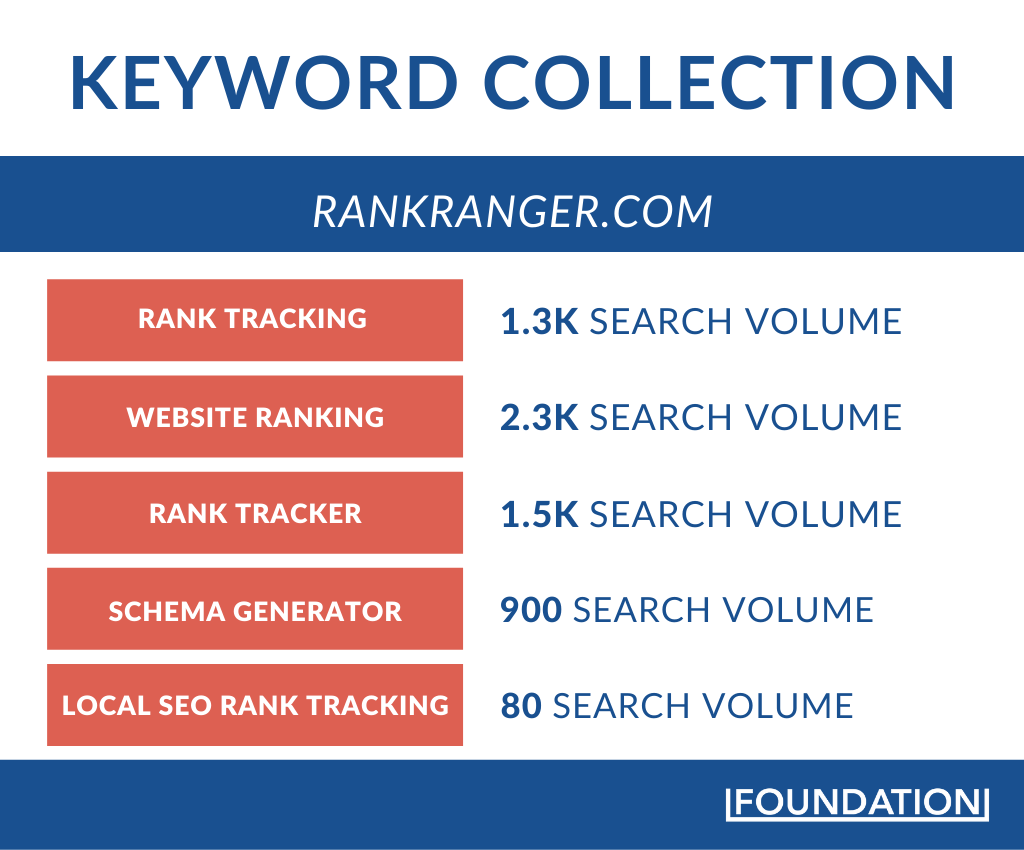Article's Content
Welcome to Volume 84
How often do you block time on your calendar to review and appraise your actions, not just your team’s?
Appraising your own actions allows you to see your strengths and growth opportunities more clearly. With such clarity, you can make better decisions that improve your relationship with the rest of the team and impact your individual and collective productivity. So, put some time in your calendar every day to review your performance. See how well you did and the areas you can improve going forward.
Here’s a peek at what’s to come in this piece:
- Similarweb + Rank Ranger: Why B2B Marketers Should Care
- How MongoDB Wins Against Massive Cloud Competitors
- Tech Layoffs & Hiring Freezes Are on the Rise
Similarweb + Rank Ranger: Why B2B Marketers Should Care
There have been a lot of acquisitions in the SEO industry this year.
First, Semrush acquired Backlinko, then Conductor acquired ContentKing, and now, Similarweb acquired Rank Ranger for an undisclosed amount.
The goal of this acquisition is to strengthen Similarweb’s marketing positioning as the go-to solution for all things SEO. Similarweb’s Chief Executive Officer explains the value of the acquisition in the blog post announcing the acquisition:
“By combining our existing industry-leading keyword traffic analysis features and unique data sets with Rank Ranger’s standout rank tracking and SEO tools, we are significantly expanding our SEO product suite for enterprises, which we’re confident will drive a powerful competitive advantage for our customers.”

Rank Ranger lets marketers monitor their ranking for important keywords or a group of keywords, manage backlink partnerships and see their progress over time, optimize landing pages, and perform advanced SEO reporting.
Over the years, Rank Ranger has tried to position itself as a leader in organic SEO, ranking for a combination of SEO tools and glossary terms. Here’s what their search scorecard looks like:

Over 90% of Rank Ranger’s search traffic is organic, and it comes from a series of tools and SEO glossary terms, some of which are on the featured snippet. Here are some top keywords they rank for and their value:

Having these tools and an SEO glossary that attracts a decent amount of traffic added to Similarweb’s mix boosts the company’s chances of competing with leading brands like Ahrefs and Semrush. Marketers can now spot opportunities to increase their own search traffic and get better returns for their investment in SEO.
Also, according to G2, Rank Ranger and Similarweb are competitors, offering near-similar services. So, instead of building a search tracking and ranking tool from scratch, Similarweb decided it was better to buy one—a competitor whose tools complement its ambitions.
On its own, Similarweb has done a pretty great job over the years of providing competitive intelligence and traffic insights to marketers across the globe. Adding Rank Ranger to the mix will make the tool more valuable for users, as they can now better track, analyze, and report SEO activities, and improve their efforts based on these insights.
KEY TAKEAWAYS
- Similarweb acquired Rank Ranger for an undisclosed amount.
- The goal of this acquisition is to strengthen Similarweb’s marketing positioning as the go-to solution for all things SEO.
- B2B Marketers can now do more than analyze competitors or other brands’ traffic and market share analysis. They can identify opportunities to increase their own search traffic and get better returns for their investment in SEO.
How MongoDB Wins Against Massive Cloud Competitors
Everyone loves a good underdog story, and so does the B2B industry,
We all love to see when a startup comes into a pretty crowded market and still manages to stick it to the industry giants, outshining these brands as the startup grows. That’s the story of MongoDB, the data application platform.

Since its IPO in 2016, the company has grown tremendously, despite the intense competition from giants like Microsoft, Google, Amazon, and a host of other big names.
My colleague Ethan wrote a full essay on how this David managed to defeat many Goliaths. One major takeaway from their strategy is the value of choosing an angle and giving it all you’ve got, instead of trying to attack from all directions.
Instead of mirroring their playbook and playing like them, MongoDB left the big boys to fight for market share in as many services as they can manage, and the company zeroed in and capitalized on one value proposition: database management.
MongoDB positioned itself as a developer-friendly database for growing companies looking to manage their data. They built authority in this direction for years before eventually rolling out the paid service, MongoDB Atlas, in 2016.
This move resulted in:
- 85% revenue growth in Q4 2022
- Annualized revenue of over $1 billion
- Over 80% growth in partnership deals from cloud vendors, including Google Cloud, one of its major competitors
It’s clear Google sees MongoDB’s success, and they chose to join them rather than expending resources trying to beat them.
You can learn all about MongoDB’s strategy here as Ethan gives a full report on the tactics they used to gain an advantage and outdo the competition.
KEY TAKEAWAYS
- MongoDB has grown tremendously since its 2016 IPO, despite being up against giants like AWS, Google, Microsoft, IBM, and Oracle.
- One major takeaway from MongoDB’s strategy is the value of choosing an angle and giving it all you’ve got instead of trying to attack from all directions.
- Instead of mirroring the competitor’s playbook, MongoDB positioned itself as a developer-friendly database for growing companies looking to manage their data.
- As a result, they saw massive growth, including over 80% growth in partnership deals from cloud vendors like Google Cloud.
Tech Layoffs & Hiring Freezes Are on the Rise
Since this month, many tech companies have either announced staff layoffs or frozen offers extended to new hires.
Meta, for example, paused its plans to recruit more staff. Robinhood is also cutting 9% of its full-time staff who have overlapping job functions after hiring more people. Caravana also laid off 2500 staff as the company moved to better align staffing and expense levels with sales volume. Netflix let go of about 150 US-based staff.
These are just a few out of many tech brands that have either had to downsize or pause any hiring efforts. Inflation is one of the reasons the layoffs and freezes are happening.
According to the Renaissance IPO index, new public tech brands have lost 60% of their market value since October last year. As a result, investors are skeptical about these startups being able to raise additional funding.
While it’s sad to see many people out of jobs with little time to prepare, downsizing is a way to reduce cash burn and prolong the business’ life expectancy without raising capital, and it seems most tech brands are jumping on the train to save their companies.
It’s a good thing different companies like Reforge are hiring new employees. And Foundation is hiring as well. If you’re interested, check out our careers page to see which role best suits your expertise.
KEY TAKEAWAYS
- Many tech companies have either announced staff layoffs or frozen offers extended to new hires.
- While it’s sad to see many people out of jobs with little time to prepare, downsizing is a way to reduce cash burn and prolong the business’ life expectancy.
- Reforge and other companies are hiring, and so is Foundation Marketing. Check out our career page to see which position suits you best.
OTHER NEWS OF THE WEEK:
🤝 Zoom acquired Solvvy, a conversational AI solution, to improve customer-employee interactions and experiences.
🎉 Shopify rolled out Shopify Audiences, a new tool to help sellers find new customers who have high intent to purchase their products.
🛑 Elon Musk put Twitter acquisition on hold over spam accounts.
BRAIN FOOD OF THE WEEK:
When was the last time you commended a team member’s or direct report’s efforts?
Seconds ago? Minutes? Hours? Days? Weeks? Months? A year? Or never?
Making celebration a big part of your personal and corporate culture can go a long way in improving the way your team collaborates with each other, as well as their output. Everyone loves a good ol’ pat on the back. It makes them feel like they matter, and their contributions impact the company’s bottom line.
So take some time today to reach out to a team member. Let them know how their efforts have affected you or the company. Those words can turn a frown upside down, and motivate them to keep giving their best.
TWITTER THREAD OF THE WEEK:
How To Manage Up by Lenny Rachitsky
INTERESTING FINDS ACROSS THE INTERNET
- The Role of Content in Link Building
- A Thread On How To Know When To Pivot
- How To Drive Alignment With Marketing Across The Company
- The Founder’s Guide to B2B Content Marketing w/ Melanie Deziel
- Founders Should Think About Channel/Offer Fit Instead Of Product/Market Fit
- The Right Way to do a Competitor Analysis for a New Product Category
IN CASE YOU MISSED SOME OF OUR GREATEST HITS:
- How Investing in Content Led to Career Karma’s $40M Valuation
- Hootsuite’s Billion-Dollar Content Repurposing Menu
- How Calm Business Is Using Content & SEO To Win In B2B
- How ClickUp Went From $0-$20M ARR in Two Years
- The SEO Strategy Capterra Uses to Drive $4M Worth of Traffic
- How Toast’s $12M+ SEO Moat Helped Them Grow During a Pandemic
WHAT WE’RE WIRED INTO THIS WEEK 🎧:
These round-ups are brought to you by me, Jessica O., every week ✌!







